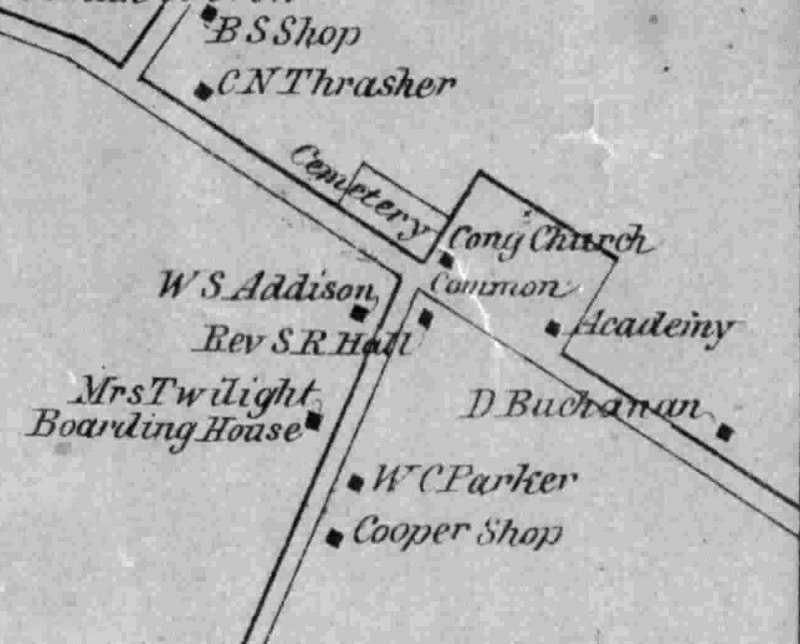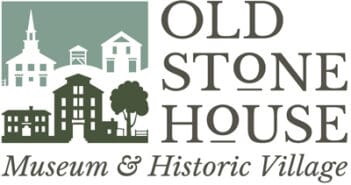
Walling Map of Brownington Village in 1859, after the school dormitory was closed and had become Mercy Twilight’s boarding house
Two of three things probably influenced the committee to locate the school at this place. This town had been the half-shire of the county from the organization of the court down to 1816, when Irasburgh was made the county seat.
To soothe the wounded pride of this town the adjoining towns were not strenuous to press any claims they might have. Then the central location of this town had something to do with it. It lay midway between the towns of Barton and Derby, the two principal towns at that time in this part of the county. The great thoroughfare then was through the towns of Barton, Brownington, Salem and Derby to Derby Line and Stanstead.
Barton Landing was a village in embryo, and the site of the present village of Newport was a wilderness; so that the places which would compete for the honor were not what they would be now. Irasburgh had the county seat and was satisfied. Craftsbury and Derby were competitors for the prize but failed, though each got an incorporation afterwards, Craftsbury in 1829 and Derby in 1839.
Mr. Wm. Baxter had probably as much to do with the location as anyone. Coming here from Norwich in 1801 soon after the organization of the town he had a remarkable career. Bred to the law, entering heartily into all the enterprises and business of the town, he was this time the most prominent, as he was the wealthiest citizen. Coming here when the town had no wealth, and he himself without a dollar, he hewed for himself a fortune from these rugged hills, so that when he died in 1827, his property inventoried nearly $100,000.
It is reported that he agreed to give the necessary buildings, and did in 1823, erecting what was afterwards known as the “Academy building,” which stood a few rods north of the Congregational church. It was a two-story edifice with a tower or belfry, the upper part being used for religious meetings until the erection of the meeting house in 1841. It stood on this ground 45 years, and in 1869 the tower was taken down and the main part of the building moved into the village below here and has been used for school purposes since.
The act required also that the town in which said grammar school was located should deed to the county treasurer at least one acre in land in fee simple. Capt. Sam’l Smith, Jr., then owned the land, and on the 18th day of December, 1822, he deeded to Salmon Nye, county treasurer, a parcel of land 17 rods on the west side of the county road leading to Derby, and 10 rods on the north side of the road leading to Coventry, making 10 rods more than an acre of land.
Previous to this a town meeting had been called on Sept. 20th, 1821, to designate the place where the academy should be erected, and at this meeting it had been voted that it should be erected “on the hill on the west side of the road leading through Brownington, on the farm owned by Sam’l Smith, Jr., known by the name of the Clark farm.”
